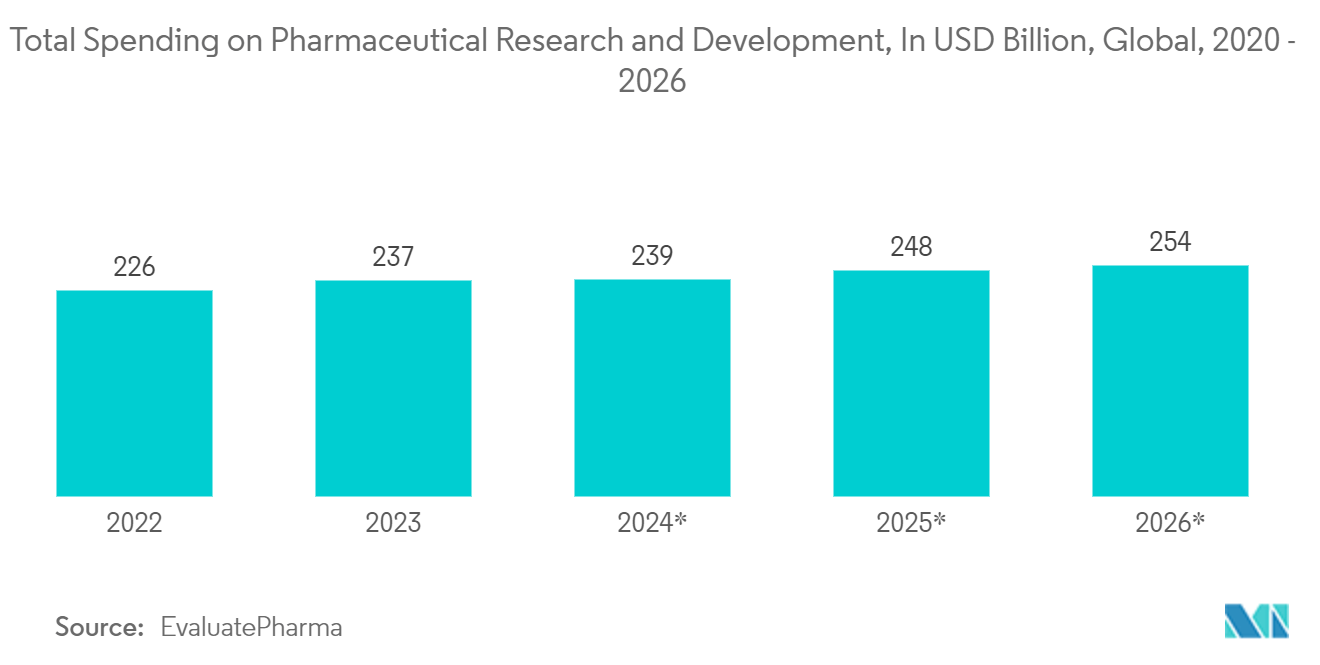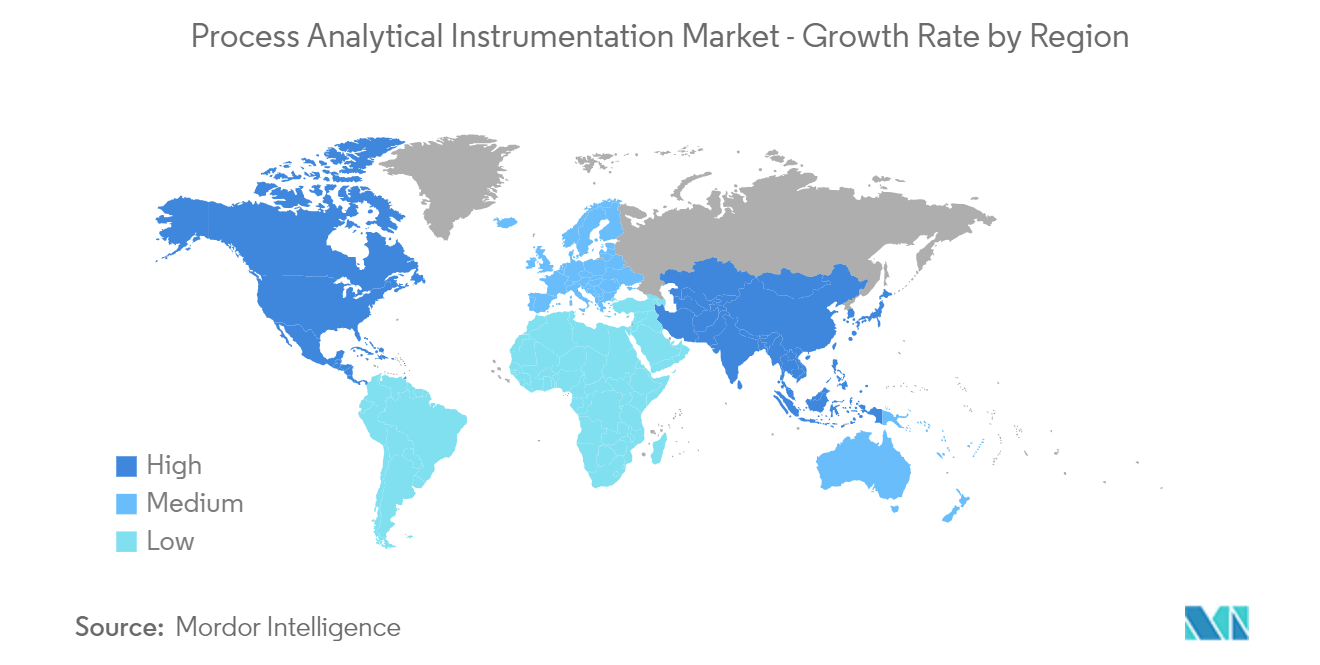Market Trends of Process Analytical Instrumentation Industry
Pharmaceutical and Biotechnology is Observing a Significant Growth
- This segment contains firms engaged in manufacturing medicinal & pharmaceutical products. It also contains companies delivering healthcare devices utilized for treatment or diagnosis.
- The biopharmaceutical manufacturing industry relies on analytical testing to help improve productivity, optimize and monitor processes, characterize biologics and biosimilars, and provide real-time product quality control. All these are essential in creating a more streamlined process within biomanufacturing, resulting in lower costs, more consistent product quality, and more efficient manufacturing across the board.
- The pharmaceutical industry has always searched for ways to improve product quality. Over time, as instrument accuracy and precision improved, the industry began focusing more on efficiency. Hence, the growing investment in pharmaceutical research and development will create a favorable outlook for the growth of the studied market. For instance, according to EvaluatePharma, global spending on pharmaceutical research and development is anticipated to reach USD 254 billion during the forecast period.
- Furthermore, crucial analytical tools like chromatography and spectroscopy are gaining new ground. Since chromatography (GC) machines can analyze tiny and light compounds, GC is used in post-production. In other words, GC is a standard process during quality control. However, identifying volatile impurities is the primary use of GC within the pharmaceutical industry.
- There are several optical spectroscopy techniques, and each excels at various manufacturing stages. While some methods enjoy wide acceptance, such as near-infrared (NIR) and Fourier transform infrared (FTIR) absorption spectroscopy, broader adoption of newer techniques, such as terahertz Raman spectroscopy, can also benefit pharmaceutical production. More recently, spectroscopy has also begun to focus on the structural composition and distribution of pharmaceutical products. It has additional applications in quality control, which help validate that the manufacturing process and end products meet strict compliance and regulatory controls. Such trends will favor the growth of the studied market in future.

North America to Hold a Significant Market Share
- Process analytical technology (PAT) and instrument vendors in North America have continually advanced their technology's usability, accuracy, reliability, and efficacy in the past few years. Companies in this sector introduced technological developments and other innovations to better support lab and QA/QC operations.
- The traditional ways of production in the industries, such as oil and gas, metal and mining, and pharmaceuticals, involved processes that included manufacturing of the finished products and laboratory analysis for verifying the quality of the final finished products. However, these traditional methods have some drawbacks as recurring manufacturing difficulties, constant process optimization, and the probability of failed batches. Thus, to overcome these glitches, the new technology known as PAT was introduced by FDA (Food and Drug Administration) to change the mode of operation.
- The US FDA has outlined a regulatory framework for PAT implementation. With this framework, the FDA tries to motivate the pharmaceutical industry to enhance the production process. For instance, in January 2021, the new portable multi-gas monitor was launched by ENVEA, intending to meet the demands of regulatory and routine stack emission monitoring while saving users'' time throughout their on-site day. The MIR 9000P complies with global regulations and standards, including US EPA's. For eight parameters, it ensures great accuracy and wide measuring ranges (NOx, SO2, CO, CO2, CH4, N2O, O2, and residual H2O). The analyzer uses a built-in paramagnetic sensor to measure O2 while using the non-dispersive infrared technique with gas filter correlation (NDIR-GFC) (SRM).
- Owing to the existence of the United States and Canada, which are the countries that spend a substantial amount on research and development and hold a prominent share in life sciences, oil and gas, materials sciences, pharma, and biopharma industries, the region holds a major share of the process analytical instrumentation market. According to Pharmaceutical Commerce, the pharmaceutical market is on the rise in the United States. By 2023, it is expected that Americans will spend USD 635 to USD 655 billion on pharmaceuticals; compared to 2019, this indicated a solid 29.6-33.7% rise in spending in 2020.
- The increase in the approval of new drugs would significantly drive the rise of pharmaceutical solutions, which would enhance the requirement of process analytical instruments to analyze the chemical composition or physical properties of the solution during drug making. For instance, the FDA's Center for Drug Evaluation and Research (CDER) approved 37 new drugs and biological products in 2022. Furthermore, 20 of the 37 novel drugs approved in 2022 (54%) were identified by CDER as first-in-class.

